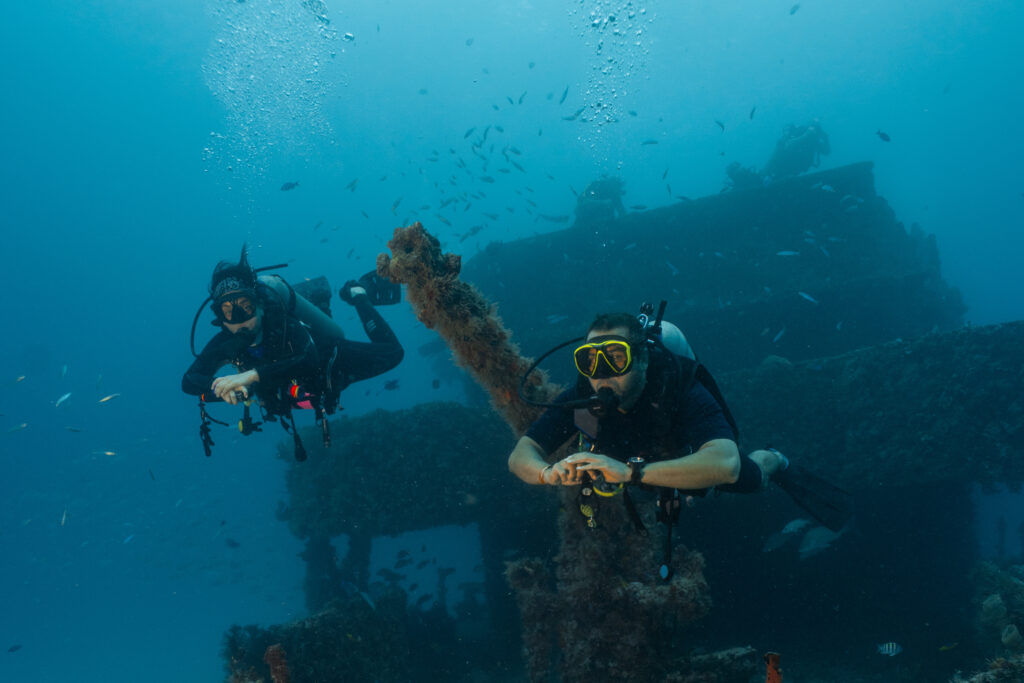What is a Gas Fraction?

In the context of scuba diving, a gas fraction refers to the proportion of each gas component within a breathing gas mixture. Understanding gas fractions is crucial for divers to ensure safe and efficient breathing under water. The significance of gas fractions cannot be overstated, as they directly influence dive planning, physiological effects on the body, and overall safety. By grasping the fundamentals of gas fractions, divers can make informed decisions that enhance their underwater experience while minimizing risks.
What is a Deco Mix?

Decompression mix, or deco mix, is a specialized gas mixture used in scuba diving to facilitate safer and more efficient decompression during ascent. Decompression is a critical phase in diving where accumulated inert gases, primarily nitrogen, are safely expelled from a diver’s body to avoid decompression sickness (DCS). Deco mixes are tailored to optimize the elimination of these gases, particularly during deep or prolonged dives where standard air might not suffice. Understanding and correctly using deco mixes can significantly enhance a diver’s safety, reducing the risk of DCS and other diving-related ailments.
What is Heliox?

Heliox is a breathing gas mixture composed of helium and oxygen, widely used in deep-sea diving due to its unique properties that improve safety and performance under extreme conditions. Unlike standard air, which consists of approximately 78% nitrogen and 21% oxygen, Heliox replaces the nitrogen with helium. This substitution is crucial in mitigating the adverse effects of nitrogen narcosis and oxygen toxicity that divers can experience at greater depths. Heliox has been a game-changer for technical and commercial divers, enabling them to work and explore at depths that would otherwise be highly hazardous.
What is Gas Blending?

Gas blending, a crucial process in scuba diving, involves mixing various gases to create a breathable mixture suitable for different diving conditions. This practice is essential for ensuring diver safety and enhancing dive performance, particularly in deeper or more prolonged underwater explorations. By carefully blending gases, divers can mitigate the risks associated with breathing high-pressure oxygen and nitrogen, such as oxygen toxicity and nitrogen narcosis. Gas blending has become a fundamental aspect of modern scuba diving, enabling divers to explore the underwater world more safely and efficiently.
What is Trimix?

Trimix is a specialized breathing gas mixture used by technical divers to safely reach greater depths than what is achievable with air or nitrox. Comprising oxygen, nitrogen, and helium, trimix helps mitigate the risks associated with deep diving, such as nitrogen narcosis and oxygen toxicity. By reducing the proportion of nitrogen and oxygen in the breathing mix, trimix allows divers to explore depths well beyond recreational limits while maintaining a safer physiological profile.
What is Travel Gas?

Travel gas is a critical component in the world of scuba diving, particularly in the practice of technical diving. This term refers to a specific mixture of gases used by divers to ensure safe and efficient ascents and descents. Unlike recreational diving, which typically involves straightforward gas mixtures like air or enriched air nitrox, technical diving requires more complex planning and gas management. Travel gas plays a vital role in mitigating the risks associated with deep and extended dives, such as decompression sickness and nitrogen narcosis. Understanding its composition, planning, and application is essential for divers aiming to extend their underwater capabilities safely.
What is Compressed Air?

Compressed air, essential in scuba diving, refers to air that has been pressurized to fit into a smaller volume, typically within a scuba tank. This enables divers to breathe underwater for extended periods. Understanding compressed air is vital for divers, as it directly impacts safety, dive planning, and equipment use. Historically and technologically significant, compressed air has evolved through innovations, becoming a cornerstone of modern diving.
What is Residual Gas in Scuba Diving?

What is Residual Gas in Scuba Diving? Residual gas, a significant concept in scuba diving, refers to the volume of gas that remains in a diving cylinder from a previous fill. Understanding and managing residual gas is crucial for divers, as it can have implications for safety, dive planning, and equipment efficiency. Definition and Relevance […]
